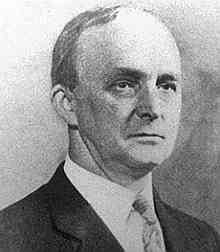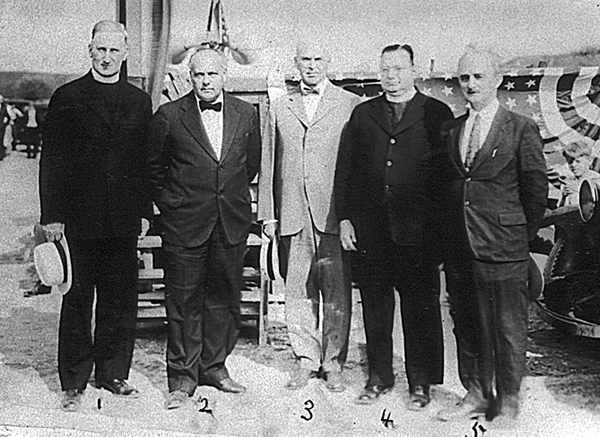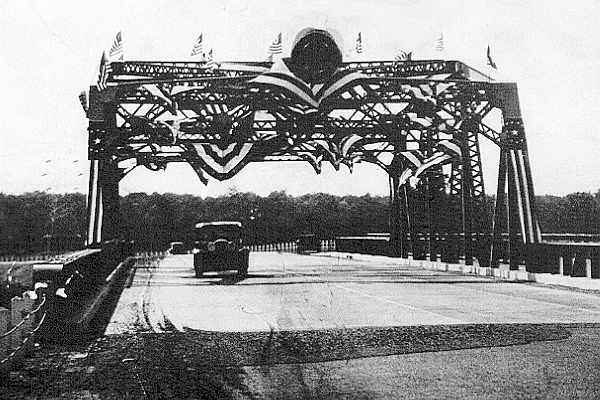[Up:Table of Contents]
[Previous: Editor's Preface]
[Next: Chapter I]

| [Top: John S. Allen's Home Page] [Up:Table of Contents] [Previous: Editor's Preface] [Next: Chapter I] |
 |
Author A. M. Stewart, 1925 photo

AUTHOR'S PREFACE
In December, 1932, the writer of this biography, in going to visit a friend in the Mercy Hospital of Auburn, N. Y., crossed the Seneca River at the site of the old Free Bridge, where construction of a new bridge was then underway. While waiting to see his friend, he called on Mr. H. R. Melone, publicity director of the Finger Lakes Association. During the conversation mention was made of the propriety of naming the new bridge in honor of a pioneer French missionary. Soon thereafter Mr. Melone published an article in the Auburn Citizen Advertiser, suggesting a French colonial name for the new bridge. The suggestion of Mr. Melone's article attracted the attention of the Reverend Edward J. Byrne, D. D., of the faculty of St. Bernard's Seminary of Rochester, N. Y., with the result that the bridge was dedicated to Father René Menard, S. J., on September 4, 1933. In collaboration with Dr. Byrne's work of organizing public opinion, this life of Father Menard was produced and published in the Catholic Courier of Rochester and partially in other newspapers. The writer is grateful to Dr. Edward Byrne for the inspiration, encouragement and support which the writer needed in order to bring this book to completion. More than twenty summers spent in the Lake of Bays region east of Georgian Bay, in the days of birch bark canoes, and a brave mother, who allowed her sons to go on long canoe trips, are memories which have influenced this writing. The Christian moral dynamic, the favorite theme of the writer's father and teacher, Rev. J. W. A. Stewart, D. D., is a motive in this biography. Acknowledgments are due to the Reynolds Library of Rochester, N. Y., to Mr. Edward R. Foreman, City Historian, and to Dr. Arthur C. Parker, Custodian of the Rochester Municipal Museum. Major Wheeler C. Case, assistant to the City Historian, was able to describe canoeing conditions on the Seneca and Oswego rivers, as they were before the state barge canal had obliterated the natural channels. In our 17th century Colonial history the Iroquois are necessarily depicted as villains, torturers and cannibals. Caution should be used as the study of this period becomes popular to prevent an unjust prejudice from arising against the living descendants of those Iroquois people, who were, as far as their circumstances and stage of progress would permit, a worthy and noble people. Many races of men, when surrounded by enemies and threatened with annihilation and when their minds pictured sinister spirits working against them, have practiced torture and human sacrifices. All the canoe trips, indicated in this book, may be taken by hardy young men. Good motor roads lead to most of the Indian village sites. The writer has found much happiness of mind and spirit and many very noble friends simply by speaking and writing fairly of persons, who are not members of his own theological viewpoint. The late Reverend Andrew V. Byrne, formerly spiritual director of St. Bernard's Seminary, is the friend mentioned in the first paragraph of this preface. Happy days had been spent with him, visiting Indian village sites which had been connected with the early Jesuit missions. The bronze plate on the bridge bears the following inscription [as it appeared in August 1997 -- Editor]: |
|
John S. Allen photo |
| At the dedication exercises Louis F. O'Neill, M. D., of Auburn, N. Y., presided. The Reverend A. M. Thibbitts, S. J., representing the Jesuit Order, Mr. Leonard H. Searing of Auburn, President of the Cayuga County Historical Society, Judge Richard R. C. S. Drummond of Auburn, Past President of the same Society, Dr. Edward J. Byrne and the writer were the speakers at the exercises. |
The speakers at the dedication of the Menard bridge
Identification of the speakers

| The dedication attracted wide attention and was attended by more than three thousand persons, who thereby demonstrated the interest of the public in such events. |
The Menard Bridge on U.S. Routes 5 and 20
east of Seneca Falls, New York, USA
at the time of the dedication, 1933

...and it still stands, August, 1997
|
John S. Allen photo |
| [Top: John S. Allen's Home Page] [Up:Table of Contents] [Previous: Editor's Preface] [Next: Chapter I] |
Contents © 1934, Alexander M. Stewart; new material © 1997 John
S. Allen Last revised 14 September 2003 |